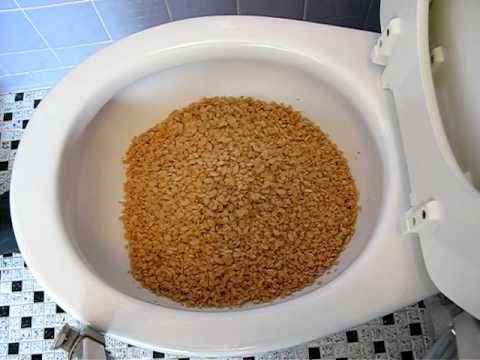Is it Wise to Flush Food Down the Toilet?
Is it Wise to Flush Food Down the Toilet?
Blog Article
How do you feel in relation to Think Twice Before Flushing Food Down Your Toilet?

Introduction
Many individuals are typically faced with the issue of what to do with food waste, especially when it involves leftovers or scraps. One common inquiry that occurs is whether it's alright to flush food down the toilet. In this post, we'll look into the reasons why individuals may consider purging food, the consequences of doing so, and different approaches for appropriate disposal.
Reasons that people may think about purging food
Absence of understanding
Some individuals might not know the prospective harm triggered by purging food down the toilet. They may erroneously believe that it's a harmless method.
Ease
Purging food down the toilet may feel like a quick and easy service to getting rid of unwanted scraps, particularly when there's no neighboring garbage can readily available.
Idleness
In many cases, individuals might merely choose to flush food out of sheer idleness, without thinking about the consequences of their activities.
Consequences of flushing food down the toilet
Environmental influence
Food waste that ends up in rivers can contribute to pollution and damage water ecological communities. In addition, the water used to flush food can strain water sources.
Plumbing concerns
Flushing food can lead to blocked pipes and drains, creating costly pipes fixings and hassles.
Types of food that ought to not be flushed
Fibrous foods
Foods with fibrous appearances such as celery or corn husks can get tangled in pipes and create blockages.
Starchy foods
Starchy foods like pasta and rice can absorb water and swell, leading to obstructions in pipelines.
Oils and fats
Greasy foods like bacon or cooking oils must never ever be purged down the toilet as they can solidify and trigger obstructions.
Correct disposal methods for food waste
Using a waste disposal unit
For homes geared up with garbage disposals, food scraps can be ground up and purged with the plumbing system. However, not all foods appropriate for disposal in this manner.
Recycling
Certain food packaging products can be reused, decreasing waste and lessening ecological effect.
Composting
Composting is an eco-friendly method to get rid of food waste. Organic products can be composted and used to enhance soil for gardening.
The significance of proper waste administration
Reducing ecological harm
Correct waste management methods, such as composting and recycling, aid lessen air pollution and maintain natural deposits for future generations.
Safeguarding pipes systems
By staying clear of the practice of flushing food down the toilet, house owners can protect against costly plumbing repairs and keep the stability of their plumbing systems.
Conclusion
Finally, while it may be appealing to purge food down the toilet for ease, it's important to comprehend the potential repercussions of this activity. By embracing appropriate waste monitoring techniques and throwing away food waste sensibly, people can contribute to much healthier plumbing systems and a cleaner environment for all.
FLUSH FOOD DOWN THE TOILET?
FLUSHING FOOD CAN CAUSE BLOCKED DRAINS IN YOUR HOME
All of the plumbing fixtures in your home are connected to the same sewer pipe outside of your home. This outdoor sewer pipe is responsible for transporting all the wastewater from your home to the Council sewer mains. Even small pieces of food that go down the kitchen sink can cause problems for your sewer. It should therefore be obvious that flushing larger bits of food, such as meat, risks a clog in either the toilet itself or the sewer pipes. Flushing greasy food is even more problematic because oil coagulates when it cools, coating the interior lining of your pipes.
THE TOILET IS NOT A BIN
Food isn’t the only thing that people shouldn’t be flushing down the toilet. People use the toilet to dispose of all kinds of things such as tampons, makeup wipes, dental floss, kitty litter and even underwear. Water goes to great lengths to educate residents about the high costs and stress placed on wastewater treatment systems simply from people flushing the wrong stuff down the toilet. It costs taxpayers millions of dollars each year, and homeowners thousands in blocked drain repairs.
FLUSHING FOOD IS A WASTE OF WATER
Flushing food is a waste of our most precious resource - water. In June this year Level 1 water restrictions were introduced to protect water supply from drought conditions. Much of New South Wales continues to be affected by prolonged drought with recent figures revealing up to 97 per cent of the state remains in drought. Depending on whether you have a single or dual flush toilet, every single flush uses between five and 11 litres of water. In the current climate this is a huge amount of water to be wasting on flushing food that should be placed in the bin (or better yet, the compost).
https://www.jabplumbingsolutions.com.au/blog/can-you-flush-food-down-the-toilet

As a serious person who reads on Think Twice Before Flushing Food Down Your Toilet, I think sharing that editorial was a great idea. Enjoyed reading our content? Please quickly share it. Let another person discover it. Many thanks for your time invested reading it.
Visit Website Report this page